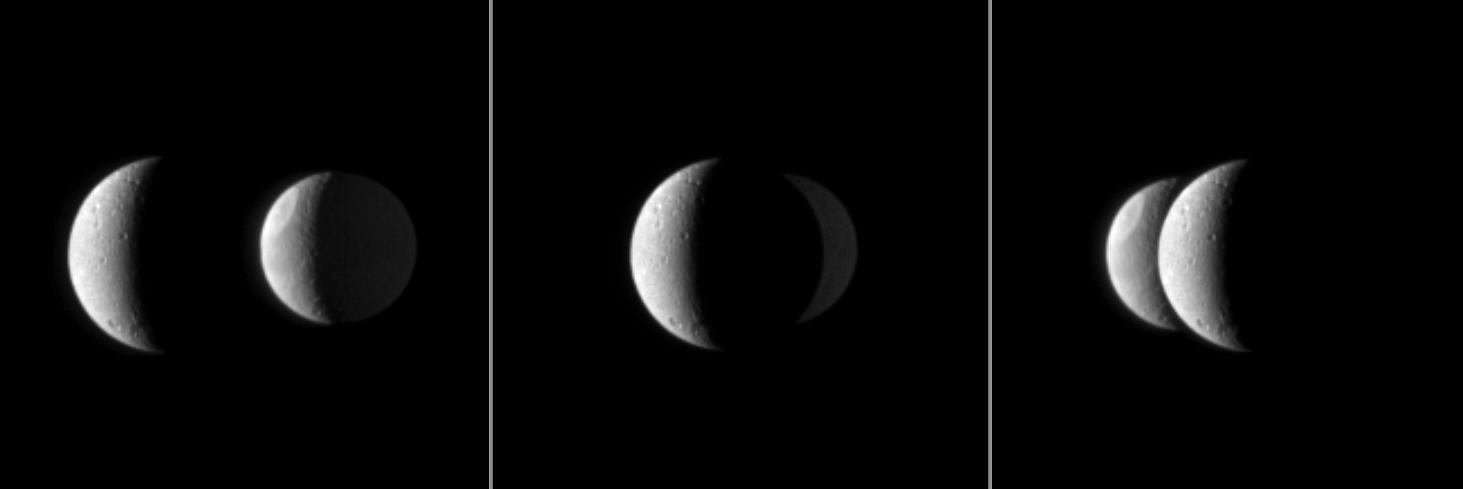Passing Tethys

| PIA Number | PIA12534 |
|---|---|
| Language |
|
From the Cassini spacecraft's perspective, Saturn's moon Dione passes in front of the moon Tethys in this mutual event.
These three images were each taken about one minute apart. These images are part of a mutual event sequence in which one moon passes close to or in front of another. Such observations help scientists refine their understanding of the orbits of Saturn's moons.
Brightly lit terrain seen here is on the anti-Saturn side of Dione (1,123 kilometers, or 698 miles across) and between the leading hemisphere and anti-Saturn side of Tethys (1,062 kilometers, or 660 miles across). The large Odysseus Crater is visible on Tethys. Tethys is 2.6 million kilometers (1.6 million miles) from Cassini. Dione is 2.2 million kilometers (1.4 million miles) away.
Sunlight reflected by Saturn, which is out of the frame to the right, is lighting up the side of Tethys that is away from the Sun, but due to the spacecraft's viewing angle and the relative positions of each body, this is not true for Dione.
The images were taken in visible light with the Cassini spacecraft narrow-angle camera on Nov. 28, 2009. Scale in the original images was 13 kilometers (8 miles) per pixel on Dione and 16 kilometers (10 miles) per pixel on Tethys. The images were contrast enhanced and magnified by a factor of 1.5 to enhance the visibility of surface features.
The Cassini-Huygens mission is a cooperative project of NASA, the European Space Agency and the Italian Space Agency. The Jet Propulsion Laboratory, a division of the California Institute of Technology in Pasadena, manages the mission for NASA's Science Mission Directorate, Washington, D.C. The Cassini orbiter and its two onboard cameras were designed, developed and assembled at JPL. The imaging operations center is based at the Space Science Institute in Boulder, Colo.
For more information about the Cassini-Huygens mission visit http://saturn.jpl.nasa.gov . The Cassini imaging team homepage is at http://ciclops.org .
Credit: NASA/JPL/Space Science Institute
